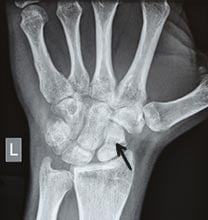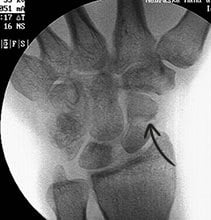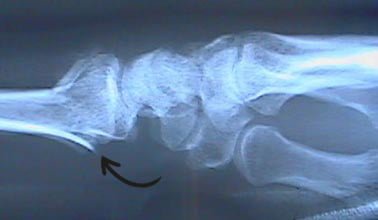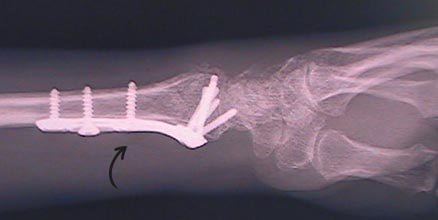Expert Wrist Fracture Treatment at Nebraska Hand & Shoulder Institute P.C.
When you or a loved one suffers a wrist fracture, it's vital to receive top-class care to prevent long-term issues, such as carpal tunnel syndrome. Nebraska Hand & Shoulder Institute P.C., led by Nebraska's leading orthopaedic surgeon, is dedicated to delivering the best treatment for broken wrists, ensuring a swift and full recovery.
Understanding Wrist Fractures
A fracture, or a broken bone, can range in severity. One of the most frequently injured bones is the radius– a primary bone located in the wrist. When the radius fractures, it may extend into the joint space, possibly leading to arthritis if not carefully treated. That's why choosing the right wrist fracture surgeon is crucial in restoring the bone alignment and preventing the risk of deformity.

Scaphoid Fractures

Scaphoid Fractures

Distal Radius Fracture

After Plate & Screw Repair
Diverse Strategies for Wrist Fracture Surgery
At the Nebraska Hand & Shoulder Institute P.C., we understand that each fracture is unique, and so is our approach to treatment. We blend traditional methods with cutting-edge techniques, from plaster splints or casts to advanced plate-and-screw fixation, to ensure optimal healing, minimize pain, and reduce complications.
When treating displaced bones, manipulation under anesthesia or with local numbness allows for realignment, followed by stabilization with a cast or splint. Regular X-ray monitoring is key to ensuring proper healing. Despite our efforts, not all fractures heal perfectly; some may lead to stiffness, arthritis, or even carpal tunnel syndrome due to scarring, swelling, and pressure on nerves. This is why we also keep an eye on nerve health and can confirm carpal tunnel syndrome through nerve conduction studies.
Our experience shows that trends in fracture care evolve. While there's been a shift towards operative reduction and fixation with plates and screws, we also achieve excellent outcomes with external fixators when appropriate. Our goal is always to ensure the bone heals as anatomically correct as possible to avoid long-term issues. Whether through a cast, splint, or surgical intervention, healing takes time and patience: about three weeks for initial comfort, six weeks for stability, and over three months for complete biological union.
In some cases, inserting allograft bone—healthy bone from donors—might be necessary to support healing. At Nebraska Hand & Shoulder Institute, whether your treatment involves traditional methods or the latest innovations, we're dedicated to providing the best possible care tailored to your specific needs.
Wrist Fracture Treatment in Children
Children's fractures often differ from adults, primarily due to the presence of a growth plate, which is a weaker point. Most fractures are treated non-operatively, using cast immobilization and occasionally a pin to secure the bone alignment. Open reduction and fixation with plates and screws are rarely necessary.
Risks of Wrist Fracture Surgery
Despite the generally high success rate, surgical treatment of wrist fractures carries certain risks, such as infection or nerve injury. However, with strict hygiene protocols and meticulous surgical techniques, these risks are minimal.
Additional factors, including open fractures or smoking, can elevate certain risks, but at Nebraska Hand & Shoulder Institute P.C., our orthopaedic specialists are committed to mitigating these risks and offering the safest, most effective wrist fracture treatment possible.



